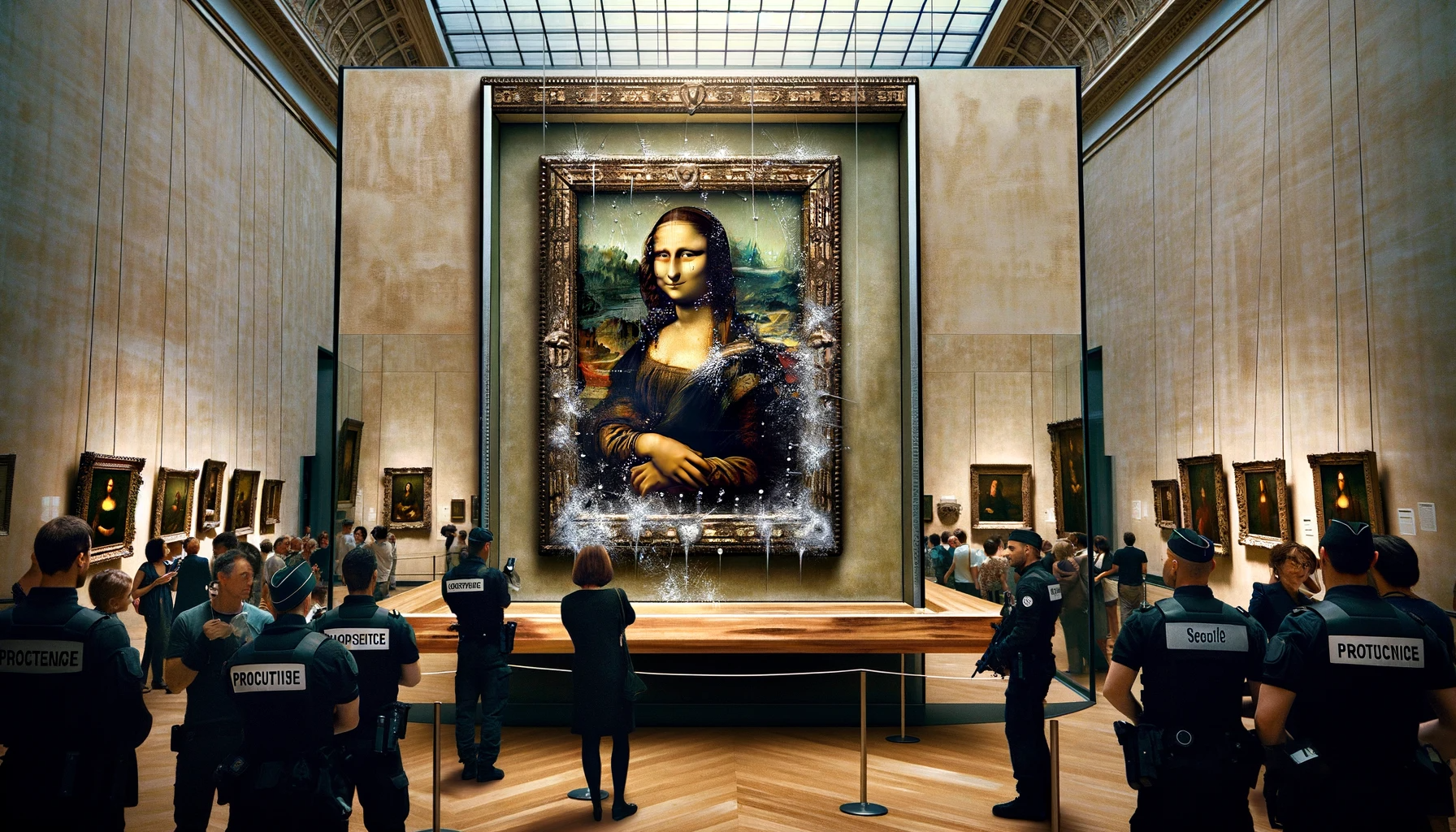The Mona Lisa, a masterpiece by Leonardo da Vinci, has stood the test of time, witnessing both adoration and moments of audacious vandalism. As arguably the most famous painting in the world, it has become a symbol of both artistic excellence and endurance. What sets the Mona Lisa apart is not just the grace of her enigmatic smile but the astonishing number of incidents she has endured—ranging from the audacious theft of 1911 to the recent pumpkin soup protest in 2024.
Indeed, there is arguably no other work of art that has faced such a barrage of attacks and attempts at vandalism. The Mona Lisa's journey is a testament to the inexplicable allure and, at times, the controversy that surrounds this Renaissance-era painting. From the daring heist that sent shockwaves across the globe to the seemingly bizarre acts of vandalism in later years, each incident has only deepened the layers of mystery and fascination surrounding the portrait. In a world where art is often revered from a safe distance, the Mona Lisa remains a unique and resilient entity, having endured challenges that surpass the trials faced by many of her artistic peers.
Theft of 1911
In 1911, the Mona Lisa was at the center of a daring theft from the Louvre Museum in Paris. Vincenzo Peruggia, an Italian handyman, managed to smuggle the painting out of the museum, creating a global sensation. The painting was recovered in 1913, adding an element of intrigue to its mystique.
Attacks of the 1950s
The 1950s saw the Mona Lisa facing two deliberate attacks. In 1956, Ugo Ungaza threw a rock at the painting, causing minor damage. The following year, Eduardo Chirinos sprayed acid on the masterpiece. Fortunately, skilled restoration efforts preserved the painting's integrity, demonstrating the commitment to its protection.
Vandalism in 2009
In 2009, an enraged woman threw a ceramic cup at the Mona Lisa in an act of anger. Although the cup shattered, the painting remained unharmed, showcasing the effectiveness of the security measures in place.
Frosting Smear in 2022
In 2022, a disgruntled visitor smeared frosting over the Renaissance-era painting's protective glass. The painting itself was unharmed, emphasizing the importance of the security protocols implemented to safeguard this priceless artwork.
Pumpkin Soup Protest of 2024
The most recent incident occurred on January 28, 2024, when protesters affiliated with the environmental group Riposte Alimentaire hurled pumpkin soup at the Mona Lisa. Protected by armored glass, the painting emerged unscathed. The protesters aimed to draw attention to unsustainable food production and hunger in France, advocating for the integration of food into the social security system.
The Louvre's response was swift, evacuating the "Salle des Etats" room and reopening it shortly after the incident. The museum lodged a complaint against the activists responsible. Riposte Alimentaire, associated with the A22 Network, is known for disruptive climate protests, echoing the tactics of groups like Just Stop Oil, which targeted Vincent van Gogh's "Sunflowers" in London in 2022.
French Culture Minister Rachida Dati condemned the protest, emphasizing the significance of preserving cultural heritage. Dati's words echoed a sentiment shared by many who believe that, regardless of the cause, the Mona Lisa stands as a symbol of cultural heritage for future generations.
Conclusion
The Mona Lisa's journey is not just a narrative of artistic brilliance but also a testament to the challenges it has faced over the centuries. From theft to vandalism, the painting has weathered storms, emerging as a resilient symbol of human creativity and endurance. As debates about cultural preservation and activism continue, the Mona Lisa remains an iconic canvas that transcends time and resonates with generations past, present, and future.

